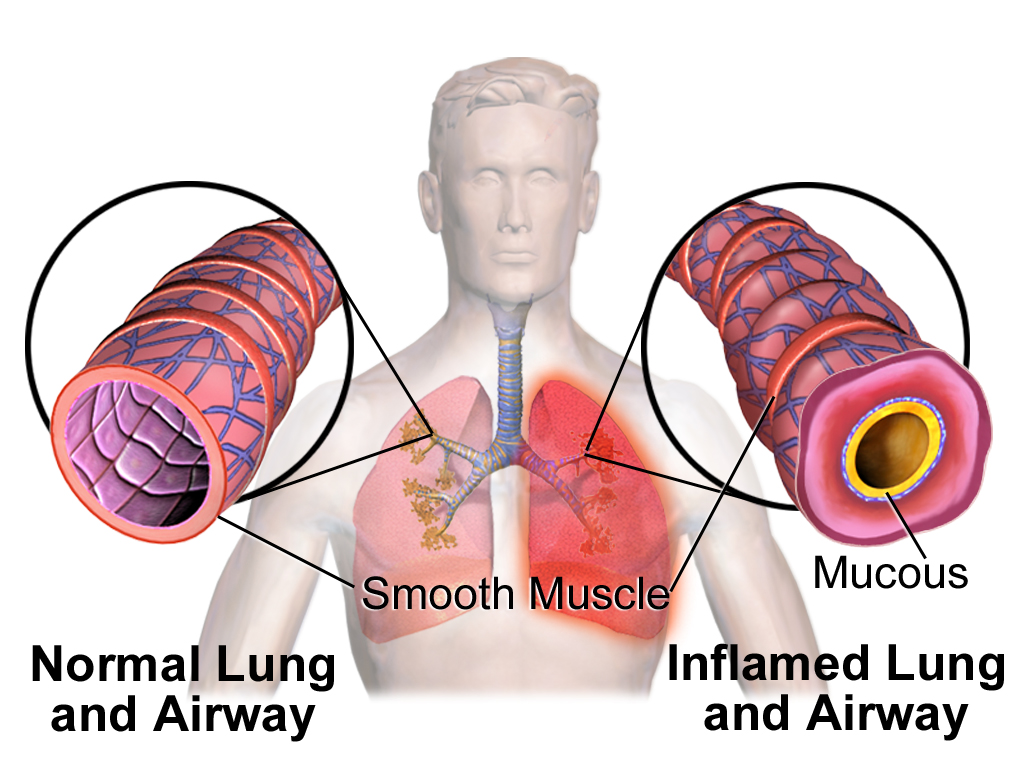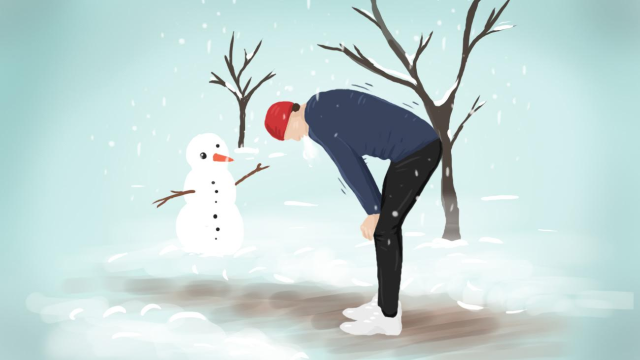It’s a bummer of a start to an exercise program: You finally get up the courage to do some high-intensity intervals, or to run in the cold for the first time, and 10 minutes later you can barely breathe. Here’s why, and what you can do about it.
Lung image by Blausen.com staff.
Wheezing when you exercise, especially when it’s cold or the air is dry, is actually pretty common. About 15 per cent of athletes, and at least 90 per cent of people with asthma, have a condition called exercise-induced bronchoconstriction (EIB).
If you give up at the first cough, you’re missing out. There are some fairly simple strategies that will keep the wheezing in check and let you exercise to your heart’s content. In fact, plenty of Olympic and professional athletes have EIB. So it doesn’t need to be an obstacle between you and your exercise routine.
What Is Exercise-Induced Bronchoconstriction?

Your airway branches into smaller and smaller tubes before it reaches the alveoli, where oxygen can enter the bloodstream. Bronchoconstriction means that those tubes, the bronchi and bronchioles, contract to make the airway smaller. When your airway is smaller, it’s hard to get enough air into your lungs, and you may feel short of breath.
This is the same process that happens during an asthma attack, but it’s not necessarily an asthma attack. You can have EIB without having asthma (which would give you symptoms in other areas of your life, not just during exercise).
Cold, dry air seems to be the trigger in EIB. When you’re exercising and breathing fast, a lot of air travels over the surface of the bronchi. If that air is cold and dry, the water and heat loss can trigger the bronchoconstriction (sometimes called bronchospasm). Even hot, dry air, like in desert climates, can trigger the reaction.
Typically, the bronchoconstriction will occur after five to 20 minutes of exercise. It’s especially common in continuous exercise, like going for a long jog or bike ride. It’s less likely if your exercise is in short bursts or if it’s mostly anaerobic (like weightlifting).
How to Keep Exercise-Induced Bronchoconstriction From Ruining Your Workout
There are three basic approaches to manage EIB: Avoiding the things that trigger it, warming up in a way that makes your airway less likely to seize up and taking medication.
Avoid triggers: The simplest way to avoid cold, dry air is just to stay inside when the weather is frosty. I have a mild case of EIB, so I take my runs to the treadmill on the very coldest days (even though I otherwise love winter running). Swimming is one of the friendliest sports for somebody with EIB: The air near a pool is often warm and humid.
Irritants in the air can also trigger EIB, including pollutants in smoggy cities, and even the exhaust from an ice resurfacing machine at the ice rink. Take note of where and when the wheezing is worst. You don’t have to completely avoid those places, but you’ll want to be prepared.
Wear a mask: A ski mask that covers your mouth can help to warm and moisten the air entering your lungs. You can spend up to $120 on pricey heat exchanging masks, or shell out a dollar for a bandanna. Both work by the same principle.
Warm up slowly: We’ve sung the praises of a good warmup, and it’s even more important if you’re trying to manage your EIB. According to a review published in Medicine & Science in Sports & Exercise, the ideal warmup for preventing bronchoconstriction involves short intense intervals. Those bursts of effort cause a “refractory period” in which the lungs won’t contract, essentially buying you free time to exercise without triggering symptoms. Alex Hutchinson at Runner’s World summarises what we know about the perfect warmup:
- Total duration should be at least 20 to 30 minutes.
- Start with a gentle jog, cycle or swim, and gradually increase the pace.
- Include several bursts at 80 to 90 per cent of maximum intensity, each lasting two to five minutes.
Use medication: If the steps above aren’t enough to keep your EIB in check, ask your doc for an inhaler. The recommended treatment is to give you an inhaler with a beta2-adrenergic agonist like albuterol, which you can use just before exercise to keep your airway open. That works in 80 per cent of cases. After that, your doctor will try other medications, or possibly reconsider the diagnosis if you didn’t get a full workup in the first place.
Other Conditions That Can Make You Wheeze
There are also other reasons you might cough and wheeze during exercise, so make sure to see a doctor if it could be something serious. Here are some of the possibilities:
- A “pursuiter’s cough” or “track hack” is coughing that occurs after exercise, but doesn’t include wheezing and usually isn’t severe enough to require treatment. If you just get an occasional cough that doesn’t really bother you, no biggie. Keep on running.
- If you have a cold, or if your allergies are acting up, that can also interfere with your breathing. (It can also trigger EIB if you’re already prone to it.)
- Exercise-induced laryngeal obstruction (EILO) occurs when your vocal cords block your airway, instead of moving to keep the airway open like they’re supposed to do during exercise. Cases of EILO are sometimes misdiagnosed as EIB, so speak up if your EIB treatment isn’t working, because it may not be EIB after all.
- A heart condition can cause symptoms including shortness of breath and pressure in the chest. Get checked out if there’s any chance this is the case.
To diagnose EIB, your doctor will probably measure how forcefully you can breathe, both before and after exercise, and after taking a few puffs from an inhaler. (They may also do other tests, to rule out other conditions.)
If you have a mild case of EIB you may be able to keep it in check on your own, but definitely see a doctor if it’s bad or if there’s any chance of a serious condition like a heart problem.
So there are lots of ways to deal with this fairly common problem. If you wheeze during exercise, you’re in good company (American athlete Jackie Joyner-Kersee and footballer Jerome Bettis wheezed too). Warm up well, avoid your triggers and seek medical help if you need it — and then get out there and enjoy your workout.

Comments